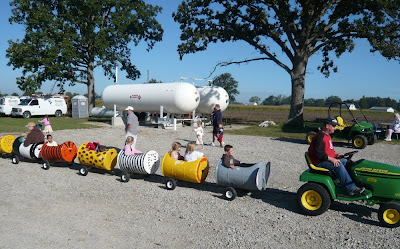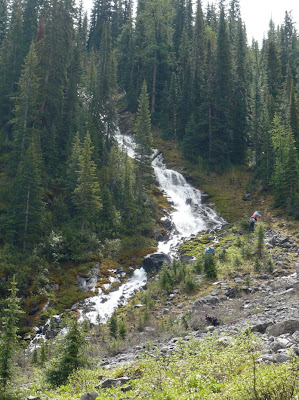As we drove the last two miles to the school, ground fog built up. You could see straight up, but the trees at the edge of the field were misty and sometimes invisible. Not good for flying. Technically, the FAA requires one mile visibility for takeoff. (Takeoff for a balloon wouldn't be that difficult -- it's the prospect of not seeing a fence or power line on landing that's the worst.) Joan and I visited with the pilots and crew; some were friends we had not seen in years; some had joined the Central Ohio Balloon Club after we stopped flying. As the sun hit the dew, the fog grew taller, but not thinner, for another hour. The balloons didn't take off this year, but some adventurous power parachutists didn't seem to mind the fog. Once the worst was over, there were 5 or 6 parked there.
There are pony rides, petting zoo (it's very kid-friendly!), kiddie trains, quilts on exhibit for later auction, all kinds of foods for sale (including on-the-spot apple butter), fire engines, and a general auction tent with items from the silly to the exquisite, all donated for the school fund-raiser. A simple ten-foot mound entertained the younger set and provided a stage for family pictures. I provide snapshots of just a few of the possibilities.
As for the balloons, maybe next year!




















































